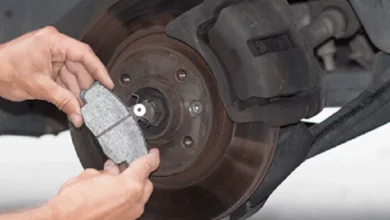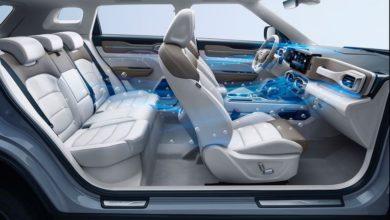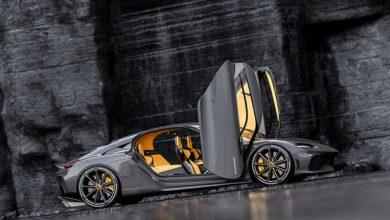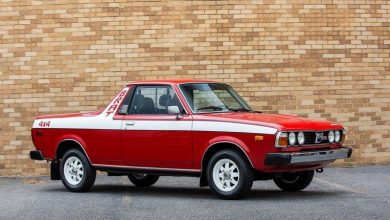10 main mistakes that most drivers make

Buying a car, you realize that you no longer have to jostle in public transport, get out in advance to catch the bus, stand at the bus stop. Besides, you can go wherever your eyes look at any time. It is for this freedom of movement that we value cars.
Despite the fact that cars are more than a hundred years old, most drivers still make the same mistakes as their grandfathers and do not understand why the life of the vehicle is shortened, its appearance worsens, or fuel consumption increases.
Do not check tire pressure
Since cars, especially nowadays due to the increased price, are quite expensive, most drivers, at best, only care about the appearance of the car, forgetting about important components. These, by the way, include tires. Yes, most drivers monitor the integrity of the tread and change the tires on time, but what about the pressure? And everyone seems to forget about him.
Just think, the wheel has slightly let up, what will happen? The fact that the grip on the road will deteriorate, as well as maneuverability. In addition, fuel consumption will increase. As a result, in the literal sense of the word, the penny pumping procedure, which can be done even with a Chinese pump for a couple of hundred rubles, is ignored, and then you hear some strange cotton and see how the tire is blown to shreds.
Especially you need to pay attention to the tire pressure after a long downtime of the car, even if it has not moved for only a couple of days.
Do not strain at the sight of a small rust
So what if a small chip appeared on the body and rust appeared on it. It’s less than a centimeter, nothing will become a car, right? In fact, big problems start with small ones. Even a small chip of the paintwork will be enough to start rusting not only the bare metal, but also a large area around. The thing is that rust will gradually eat into the metal, and there, inside the structure, it will no longer be held back by the paintwork. Therefore, it is important to immediately paint any places of scratches, chips, bumps, and other body damage.
They drive on a small amount of fuel
Every driver found himself in a situation where the arrow on the dashboard was approaching the value of E, that is, to an almost empty tank. The only thing drivers are worried about at this moment is how to get to the gas station in time. But there is a reason for more concern. The fact is that the gas pump located in the tank is designed so that it cools down during operation due to fuel. But if the tank is empty, the pump can overheat and wear out quickly.
In addition, when the tank is almost empty, the pump may become clogged due to debris at the bottom of the gas tank. This is the garbage that gets into the tank when you open it at the gas station, as well as with not particularly high-quality fuel or in the form of rust from the tank itself.
Do not check the level of liquids in the nodes and do not change them in time
If you change the engine oil only when the “check engine” lights up on the dashboard, we have not very good news for you, or rather, for your wallet. This is a fairly common mistake, especially for novice drivers who inattentively monitor neither the oil level nor the intervals of its change. As a result, the oil either ends and oil starvation begins in the engine, or it turns into a black viscous substance that does not perform its functions.
Things are even worse with other liquids in the car. If they still somehow take care of maintaining the level and quality of oil in the engine, then they completely forget about the oil in the gearbox, brake fluid, and power steering fluid. And then they wonder: why does the box crunch, the brakes have lost responsiveness, and the steering wheel barely turns?
Rarely wash the car
Perhaps it will be a discovery for you, but you need to wash your car not only in summer, but also in spring, autumn, and even winter. The fact is that dirt that remains on the paintwork for a long time can lead to its destruction or, at least, to loss of color due to the fact that it may contain reagents and other chemicals. In addition, the dirt itself has a negative effect on the paintwork and metal.
So the logical conclusion is wrong if it rains all month and it doesn’t make sense to wash the car because it will soon be dirty again. If you want the car to have a presentable appearance for as long as possible, you should wash it at least twice a month.
Incorrectly adjust the driver’s seat
It’s about the seat, steering wheel, and other components. If you are sitting too far away, you will need more time to reach certain controls of the car. If you sit too close, it will not allow you to make sharp maneuvers that are necessary for emergency situations because you will not be able to quickly scroll the steering wheel.
As for the steering wheel’s tilt, this is also an important parameter. When it is adjusted incorrectly, your back, shoulders, and arms become numb, and you get tired faster, which also does not have a particularly good effect on driving. Therefore, it is important to adjust all the elements so that they give maximum comfort and allow you to react quickly to the situation.
Incorrectly distribute the load on the car
This problem is especially acute in crossovers, pickups, and other large cars with a large trunks. The fact is that the maneuverability of the car is designed based on the uniform load of passengers and cargo. If you are driving alone, and there is a pallet with bricks in the trunk, the weight of which can exceed a ton, the center of gravity shifts towards the rear of the car. In case of sudden maneuvers, this can lead to loss of controllability.
In addition, an uneven load wears out the chassis faster since it, like everything else, is designed for approximately the same distribution of cargo over the entire area.
Do not warm up the car before the trip
Suppose the temperature outside is minus or even plus, but approaching zero. In that case, it is worth warming up the car for at least a couple of minutes before the engine reaches operating temperatures. Many drivers do not do this, especially in those regions where the temperature rarely drops below -10 in winter. All they think about is the performance of the oil. And since it does not lose its properties to -30 degrees, you can safely go.
However, if you do not warm up the engine, it may simply jam due to the temperature difference, and then the driver, already on a tow truck, will go to the service station for major repairs. So not warming up the car in winter is one of the stupidest decisions.
By the way, if, for example, you are late and there is no time to warm up, you can go without it, the main thing is to move slowly and at low speeds until the engine reaches operating temperatures.
Defrost frozen nodes with hot water
What happens when it rains in the evening and frost hits at night? The doors seem to be welded to the body, and it is problematic to open them. What do many drivers do in this case? They are watered with hot water. Not boiling water, what will happen? And the fact that due to a sharp temperature drop, the metal expands rapidly, which can not only crack the paintwork but even break the structure.
Even worse, if the driver thinks of pouring hot water on the icy windshield. At a minimum, this can lead to the formation of cracks, and in some cases, even lead to serious damage.
Keep the foot on the clutch
In the first lessons in driving schools, they teach that if you drive a car with a manual transmission, you need to put it at a neutral speed when stopping. However, drivers seem to forget this simple thought and, in order to make fewer movements, stopping, for example, at a traffic light, just keep their foot on the clutch pedal so as not to pull the handle of the box once again.
This is wrong because such retention is not useful for the box. It can grind gears, which is why later speeds will start to “fall out”. You could see this in old buses and minibusses, where drivers do exactly that. When shifting gears, a loud creaking sound is heard, and this indicates a violation of the integrity of the gears.




